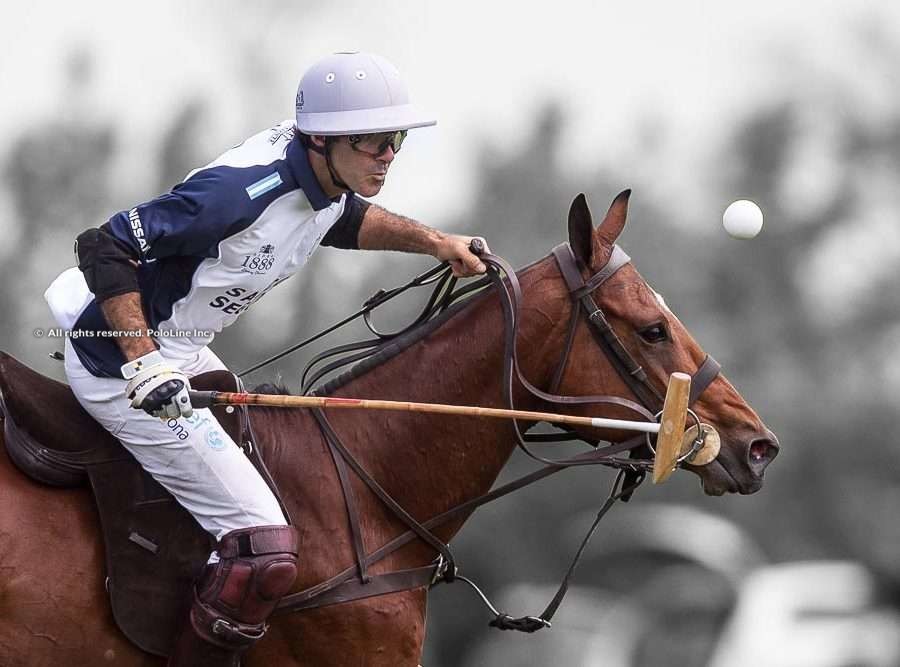What can we say about Juan Martín Nero that has not been said before? He has won the Triple Crown on multiple occasions, both with Ellerstina and La Dolfina, and since his boom in 2004 with Indios Chapaleufú, the Trenque Lauquen local has grown to be considered the most outstanding back in polo. But not only is Nero a defensive beast, he can be a crucial offensive player, too.
To reach these heights, a player must be well mounted, and Nero certainly is. He started out playing the horses of his mentor, Marcos Heguy, and grew to play clones of Dolfina Cuartetera, which he currently does. But Nero has his own string, his own breed, and he is a player who knows a lot about horses. That’s why PoloLine met up with the best back in the world to talk horses.
Can you describe your perfect polo horse?
The perfect horse has a good mouth, turns well, and has a good temperament. It has to be a good-looking horse, one that can play a whole chukker without any issues.
What is the most important characteristic for a polo horse?
It is very difficult to define one characteristic as the most important. You need a bit of everything; if the horse doesn’t have a good mouth or a good temperament, then it is no good. I would say that it is crucial to have a mixture of the three I previously mentioned: a good mouth, good sides, and a good temperament.
What is the ideal number of horses for a string?
In terms of the Argentine season, which is composed of three tournaments over three months, the ideal number is between 15 and 18 horses. It’s a lot, but that is what I consider to be ideal. Then, one does what is possible to reach that number. Within that amount, you have a few mares that are being tried, and you leave the older ones for the end of the season.
On average, how many new horses should enter a string each season?
It would be ideal to have four or five new ones each season, but it is not easy. The same thing happens in England: you always have to try and add between three and five horses into your string so as to improve, because several get old and others get injured.
What is the most important stage when training a horse?
Every stage is important. It is hard to talk about just one because you can have the best trainer, but if you get the horse and it is not ready to play practices, you will ruin it. The horse starts at a year old and you get it back at three and a half years of age. That horse, three or four years later, when they are about six or seven, will be playing polo at a high level. Just think of the time it takes to make a good horse! That is why I think that every stage is important, from the trainer, to the rider who takes the horse out every day. It is very easy to ruin a good horse, so one has to be careful.
Which is, or has been, your favourite horse, and why?
Oli Chicha. I loved her; she was a small mare, with a strong body, and she gave me a lot of confidence. She was explosive and was very quick off the mark—that was when you won plays with her. She made me a better player. She was one of the best mares I have ever played and one of the best I have ever had in my stables.
Which is, or has been, the best polo horse you have seen play, and why?
Dolfina Cuartetera. She was amazing. I am now lucky enough to play her clones, and they are incredible. I imagine that the original was just as good, or even better. Adolfito got on that mare and he felt the same as I felt when I played on Oli Chicha, she gave him a lot of confidence. They are the type of horses that make you play better. On Cuartetera, Adolfito did whatever he wanted. She had mouth, was explosive, and very comfortable. That’s why she won so many prizes.
Of the horses you saw play, is there one that you would like to try?
I would love to get on every player’s best horse! There are thousands of horses I would like to try. Every player has at least two or three good mares in their string. I think I could name 20 that I would like to try.

